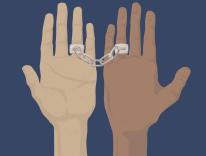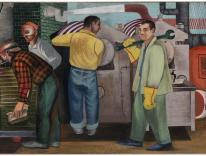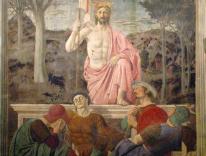John Connelly, professor of history at the University of California, Berkeley, and a frequent Commonweal contributor, gave the annual Catholic-Jewish Engagement lecture at Fairfield University last week. Connelly is the author of From Enemy to Brother: the Revolution in Catholic Teaching on the Jews 1933-1965, and his lecture touched on many of the personalities and themes from his award-winning book. Commonweal subscribers might remember his 2012 article, “Nazi Racism & the Church,” adapted from that book. What Connelly’s extensive research uncovered was the little known but pivotal role played by Jewish and Protestant converts to Catholicism in the Second Vatican Council’s abandonment of the traditional Catholic teaching of contempt for Jews. It was John XXIII who insisted the council take up the question, and in the council document Nostra Aetate (“The Relation of the Church to Non-Christian Religions”) the bishops denounced anti-Semitism and proclaimed that “God holds the Jews most dear for the sake of their Fathers; He does not repent of the gifts He makes or of the calls He issues—such is the witness of the Apostle. In company with the Prophets and the same Apostle, the Church awaits that day, known to God alone, on which all peoples will address the Lord in a single voice and ‘serve him shoulder to shoulder.’”
Whether God’s faithfulness to his covenant with the Jewish people should also mean an end to the church’s missionary outreach to the Jews and a rejection of traditional supersessionist teaching is a notoriously thorny and complicated theological issue. That question has frequently been debated in our pages (see “What Christians Owe Jews,” February 9, 2015; “Getting Past Supersessionism," February 10, 2014). Doubtless the theological argument will go on. As a matter of history, however, the story Connelly tells is as fascinating as it is surprising. For the lecture, he focused on the life of Msgr. John M. Oesterreicher and the role he played in the drafting of Nostra Aetate.
Oesterreicher was born to Jewish parents in Moravia (now in the Czech Republic) in 1904. His parents would be sent to concentration camps and murdered by the Nazis. In his teens, Oesterreicher came across an excerpted version of the Gospels and fell in love with Jesus. He converted to Catholicism when he was twenty and in short order was ordained. He was a brave and determined opponent of racial anti-Semitism and of Hitler. At the same time, he was fervently dedicated to converting the Jews to Catholicism. Famous for his writings and radio broadcasts denouncing the Nazis, he fled Europe in 1940 and ended up at Seton Hall University in New Jersey, where he founded the Institute of Judaeo-Christian Studies. Oesterreicher appears to have been a firm believer that Hitler was the anti-Christ and that history was entering the End Times. His hope was that the Jews as a people would soon convert, thus bringing about Christ’s Second Coming. Yet Hitler was defeated and history did not end.
After the war Oesterreicher was regarded as one of the church’s experts on the mission to the Jews. As a consequence, he was called to help draft Nostra Aetate. In the difficult negotiations surrounding the drafting of that document a remarkable personal transformation seems to have begun. Long convinced that Jewish conversion was necessary for the fulfilment of salvation history, Oesterreicher came to accept that God’s plan was much more inscrutable, and that the covenant with the Jews had not simply been replaced or superseded by the new covenant in Christ. Nostra Aetate addresses the delicate question of proselytizing the Jews obliquely. In fact, Oesterreicher suggested that language in an early draft of Nostra Aetate that spoke of the conversion of the Jews be removed. It was Oesterreicher who proposed that the document describe the church as awaiting “that day, known to God alone, on which all peoples will address the Lord in a single voice and ‘serve him shoulder to shoulder.’”
The church awaits, but cannot bring that day about through a mission to the Jews.
So, as John Connelly put it in his lecture, “the man who had been the most determined Catholic missionary to the Jews helped the church break with the idea that Jews must become Christians in order to be saved. The missionary helped end Catholic mission to the Jews…. John Oesterreicher helped bring about this change, and we can also say that it changed his life.” By the end of his life, Oesterreicher had come to think of himself as both a Jew and a Catholic.
As an historian, Connelly seems humbled by the strange twists and turns of this story, and the mystery of it. Nearly two-thousand years of Catholic anti-Jewish teaching was somehow turned on its head. A once despised people are now seen as our elder brothers in faith. How did it happen? I take one of Connelly’s points to be that the actions of individuals still shape history. Without the unexpected initiative of John XXIII or the contributions of John Oesterreicher perhaps nothing would have changed.
You can’t make much sense of Catholicism if you do not understand and revere Judaism. Or so I’ve been telling my Jewish wife for forty years. I think she’s beginning to believe me, but it’s still a work in progress.
Please email comments to [email protected] and join the conversation on our Facebook page.
Share
Previous Story
Monday Morning Links: March 30
Next Story
Distant in Heart


